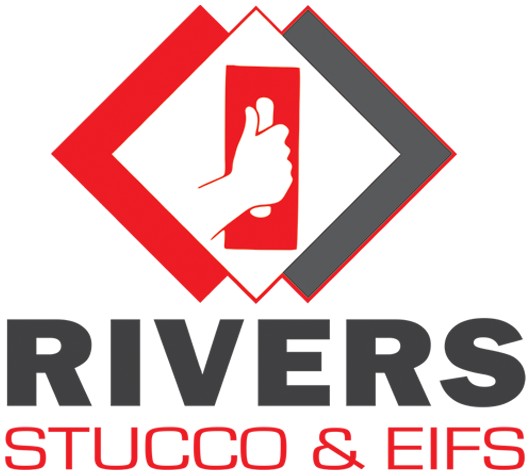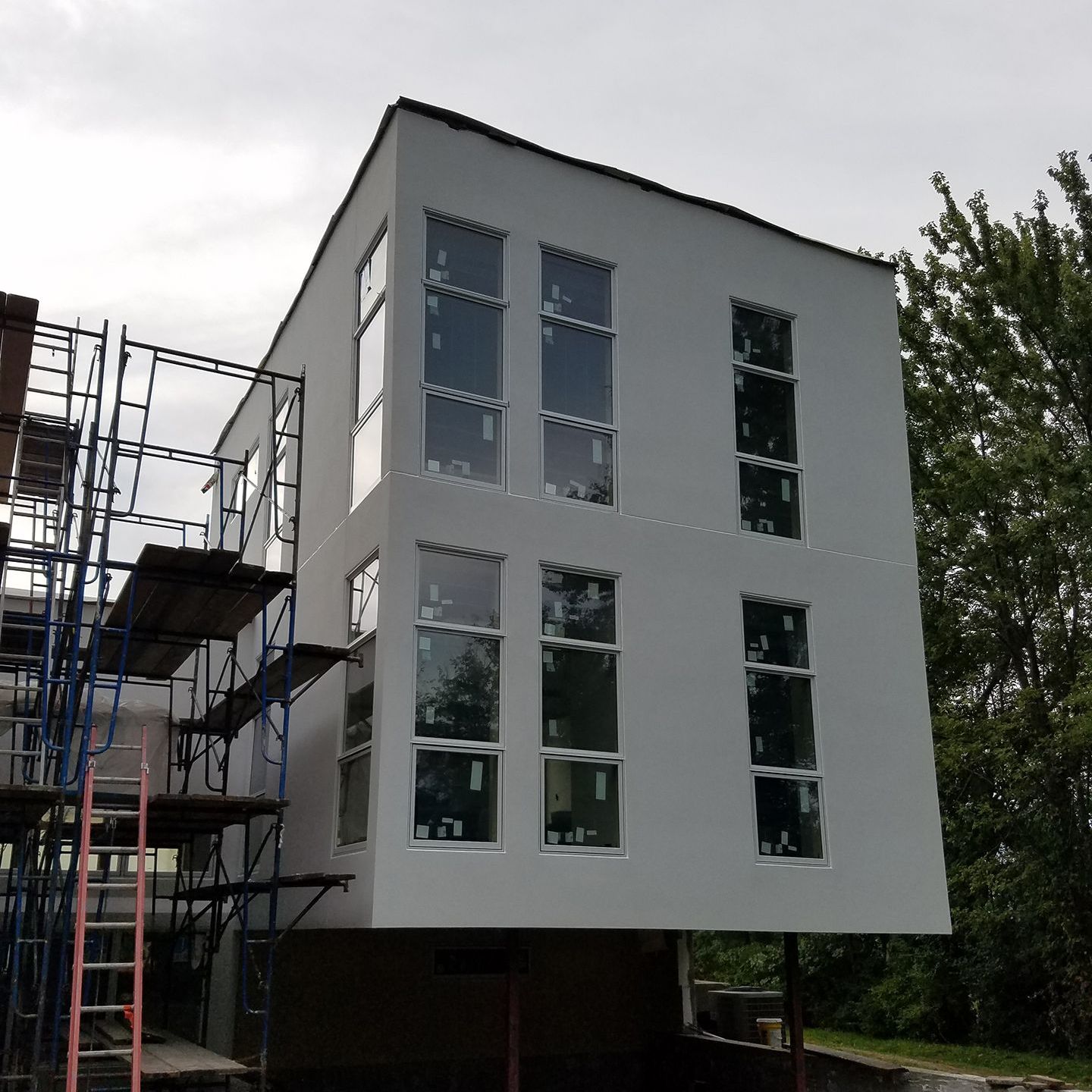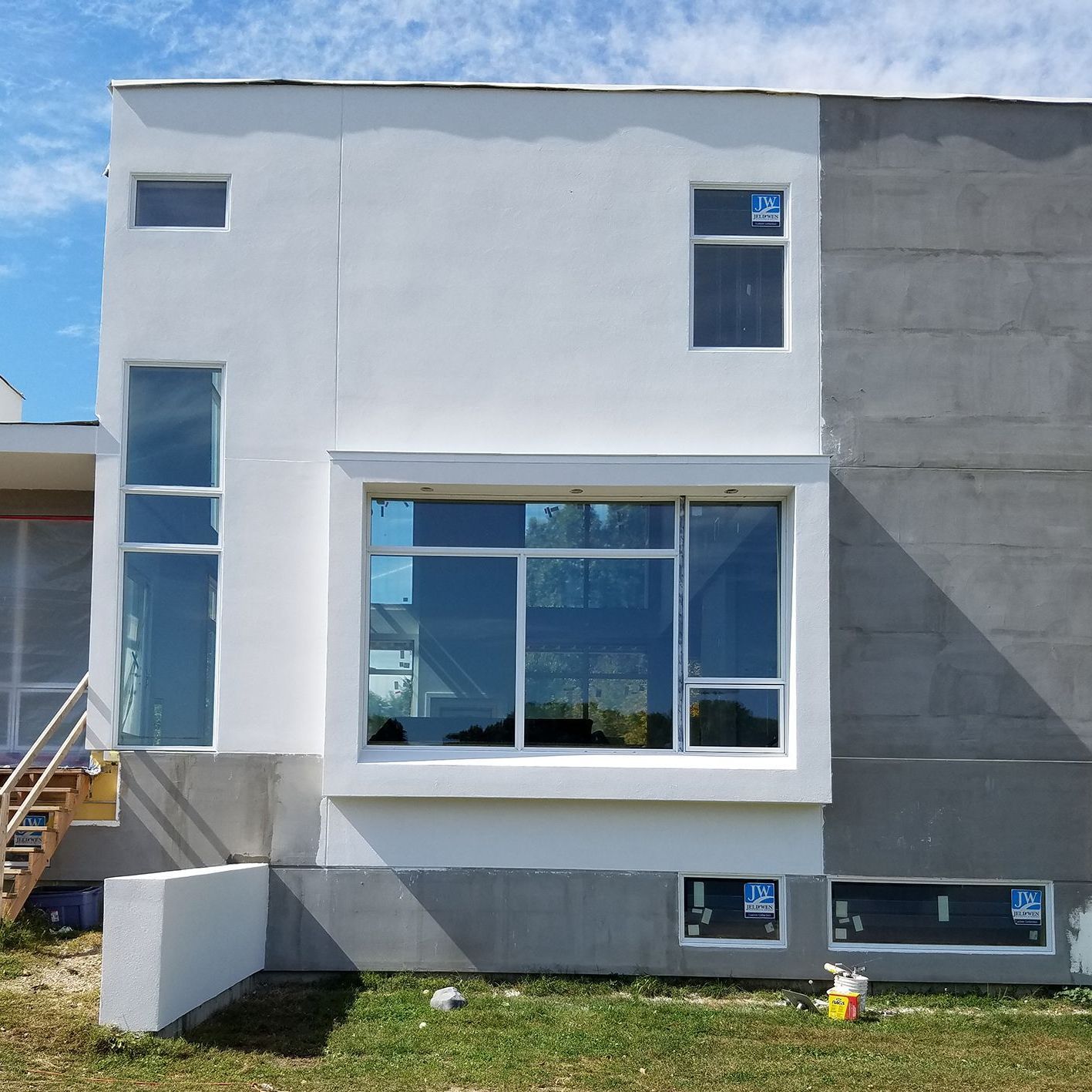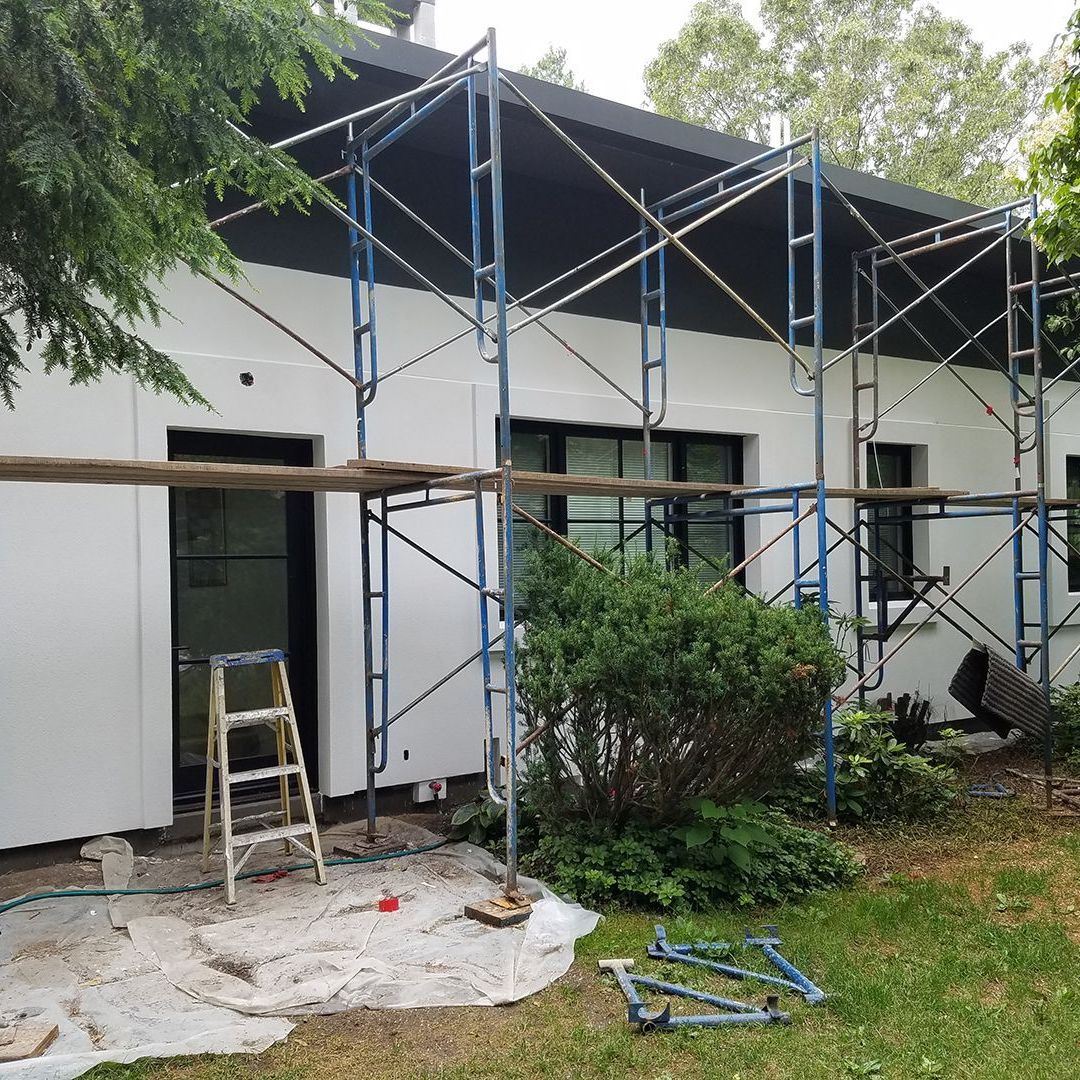EIFS / SYNTHETIC STUCCO
EIFS is an acronym for "Exterior Insulation and Finish Systems" The product is also called synthetic stucco, and it refers to a multi-layered exterior finish.
There are six layers to modern EIFS:
- An optional water-resistive barrier is generally fluid that's applied to cover the substrate.
- Adhesive attaches insulation board to the supporting structure. Mechanical fasteners can be used in some cases.
- A foam insulation board is secured to the exterior wall surface substrate, most often with adhesive.
- A base coat, either an acrylic or polymer-based cement material, is applied to the top of the insulation then reinforced with glass fiber reinforcement mesh.
- The reinforcement mesh is embedded in the base coat material.
- The finish is a textured coat that's decorative and protective.

GET A FREE ESTIMATE TODAY
BENEFITS OF EIFS
The growing popularity of EIFS is due to the fact that few, if any, competitive materials offer such a wide range of desirable product benefits. Chief among these are superior energy efficiency and virtually unlimited design flexibility.
ENERGY EFFICIENCY AND ENERGY CODES
EIFS can reduce air infiltration by as much as 55% compared to standard brick or wood construction. And since walls are one of the greatest areas of heat and air conditioning loss, improvement in the wall insulation can be very meaningful in terms of energy conservation.
What's more, EIFS add to the "R-value" of a home or building. (R-value is a measurement of the resistance to heat flow; the higher the R-value, the better the material's insulating value.) Most EIFS use insulation board with an R-value of R-4 to R-5.6 per inch as the innermost layer in the wall system. When combined with standard wall cavity insulation, this extra layer can boost wall insulation from R-11 to R-16 or more.
Another point to keep in mind on new construction: Due to the energy efficiency of EIFS, it may be possible to specify lower-capacity heating and air conditioning equipment without sacrificing anything in terms of interior comfort.
DURABILITY
Unlike wood, stucco and other siding materials, EIFS rarely need painting. Most EIFS systems are specially formulated with 100% acrylic binder, which gives EIFS superior resistance to fading, chalking and yellowing. As a result, the systems tend to maintain their original appearance over time. And since the color is integral to the finish coat, even if the surface is scratched, the same color appears beneath the abrasion.
EIFS also have excellent resistance to dirt, mildew and mold, which helps keep the building exterior looking clean and freshly painted. Should the surface ever become soiled, it can usually be cleaned by hosing it down.
Impact Resistance
EIFS are sustainable, durable, and resilient. Highly impact resistant EIFS are easily achievable using industry standard application practices and products that are very effective and economical. The keys to high impact resistant EIFS are the same as for any quality construction: good design, firm and definitive specifications, use of the proper products, and proper construction.
DESIGN FLEXIBILITY/AESTHETICS
The rich appearance of EIFS bears a resemblance to stucco or stone, but the systems are far more versatile than these and other materials. Not only do EIFS come in virtually limitless colors and a wide variety of textures, but they also can be fashioned into virtually any shape or design.
With EIFS, skilled applicators can create all sorts of exterior architectural detailing that would often be cost-prohibitive using conventional construction -- cornices, arches, columns, keystones, cornerstones, special moldings and decorative accents are but a few examples.
Using this ingenious process, EIFS applicators can give a striking, distinctive appearance to any building or residence.
MOISTURE CONTROL
Recent research, conducted by the Oak Ridge National Laboratory and supported by the Department of Energy, has validated that EIFS are the "best performing cladding" in relation to thermal and moisture control when compared to brick, stucco, and cementitious fiberboard (commonly known as fiber cement) siding.
EIFS are among the most water resistant exterior surfaces you can put on a house. But as with all claddings, EIFS must be correctly installed and properly detailed if they are to perform properly. Otherwise, moisture can get behind the systems and cause damage, just as it can with wood siding, brick or any other exterior.
Water intrusion is seldom a problem on commercial structures with EIFS. Water intrusion damage to homes is uncommon, but when it does occur, the moisture typically affects only small areas which can be easily and inexpensively repaired.
FIRE TESTING
EIFS have passed the major fire resistance tests that are required by the building codes. EIFS have passed fire resistance, ignitability, intermediate multi-story, and full scale multi-story corner tests; meeting the standards set forth with each test.

